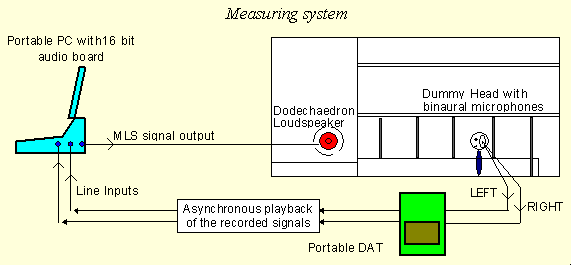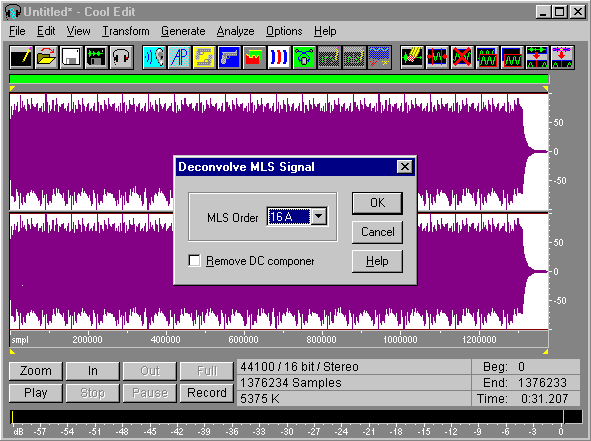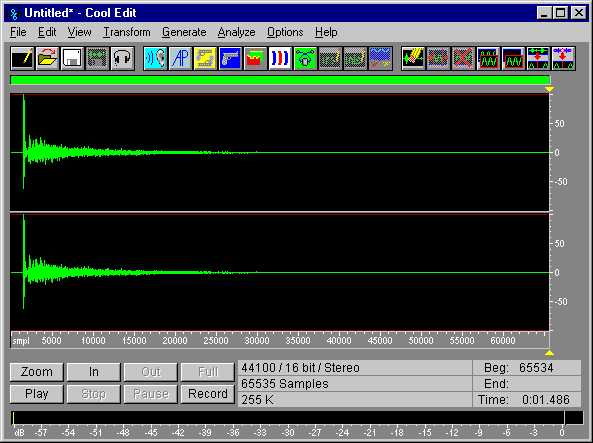Deconvolve MLS signal - Deconvolve IRS signal
These two modules perform very similar tasks: they recover the impulse response during measurements made following this scheme:
 |
The computer is used for generating the MLS (or IRS) sequence, and for feeding the omnidirectional loudspeaker (or the sound reinforcement system, if this must be included in the measurement). The recording of the response is not made simultanously to the playback of the signal, for three reasons:
- A full-duplex audio board is required for simultaneous playback and recording, and most notebooks are not equipped with such boards.
- Most audio boards don't have a stereo MIC input (preamplifiers should be required for entering the LINE IN stereo input).
- You need long cables or a stereo wireless link for connecting the microphones with the computer
A small, portable DAT machine solves all these problems, enabling very fast measurement inside the room. Then, at home, You can playback the sampled signals from the DAT cassette to the audio board, recovering the binaural impulse response in each point of the room where You have recorded the signals.
Obviously, if You make laboratory measurement with a full-size computer, You probably have a full-duplex audio board, You don't have problems using high quality preamplifiers and cables, and You prefer to have real-time measurements for looking quickly at the results.
The following picture shows how the signal appears in Cool Edit after recording a period corresponding to 20 repetitions of the original signals:
 |
After applying the deconvolution process, as shown above in the dialog box, You get this result:
 |
At this point, You have simply to start another instance of Cool Edit (if You don't want to overwrite the sampled signal), and then paste the impulse response from the Windows Clipboard. This is the waveform obtained in this way:
 |